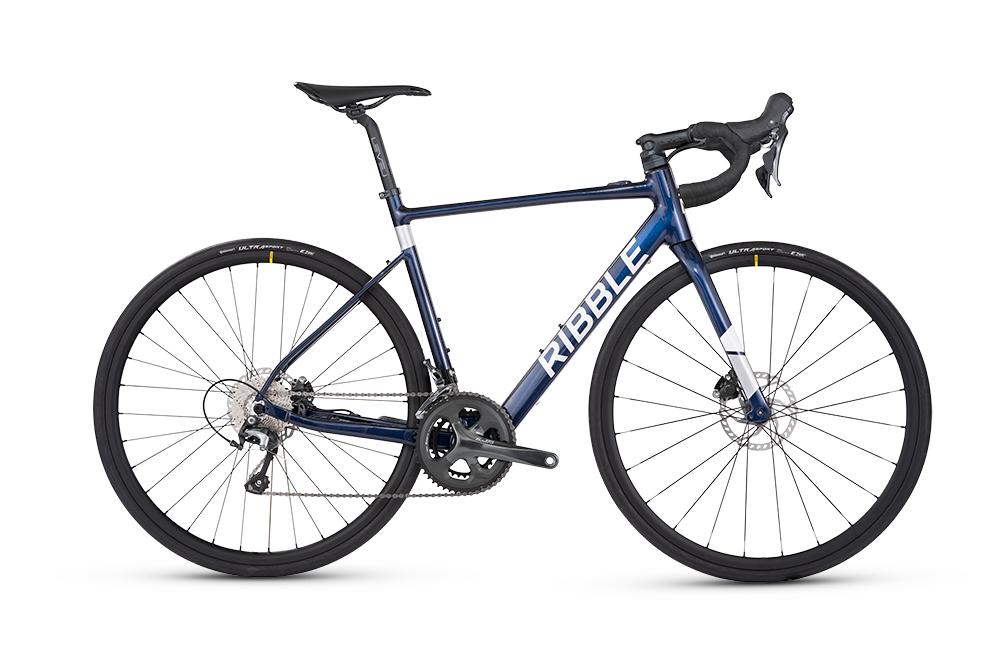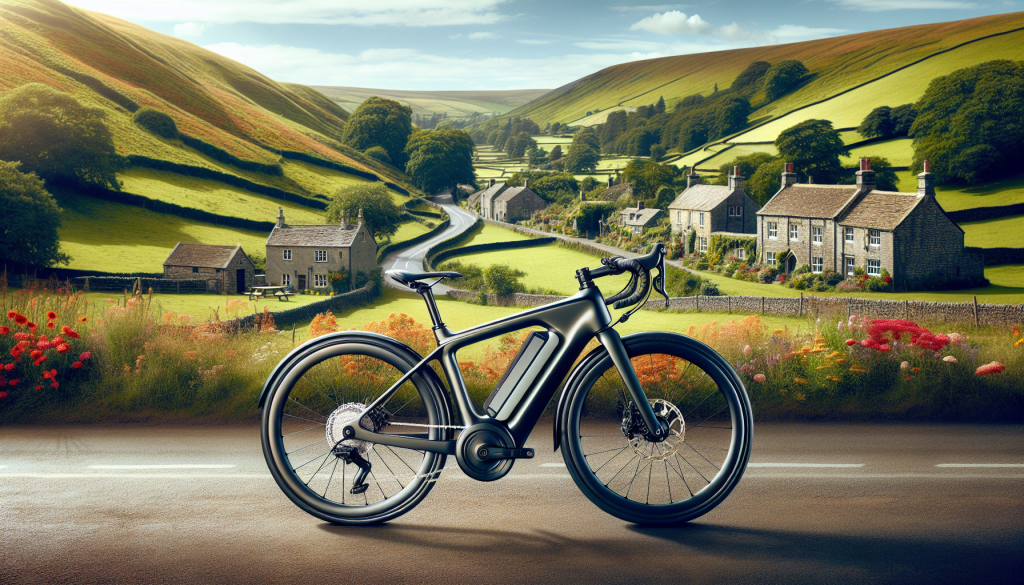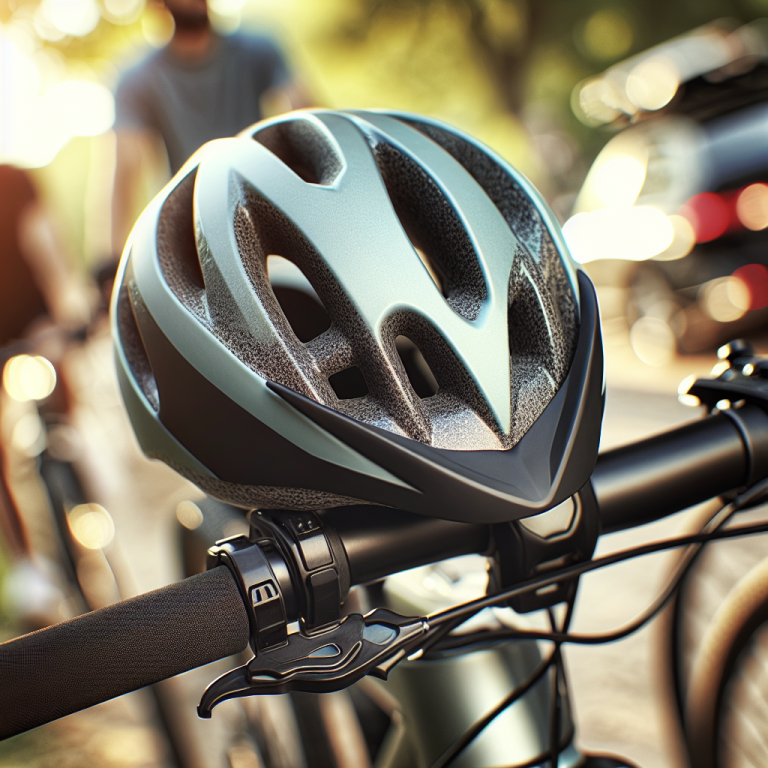Electric road bikes are revolutionizing the way people commute and exercise in the UK. Have you ever wondered how these bikes actually work? Well, wonder no more! In this article, we will take a closer look at how electric road bikes function in the UK. From the powerful motor that assists your pedaling to the rechargeable battery that provides the bike with energy, we will explore all the fascinating elements that make these bikes a popular choice for riders of all ages and abilities. Strap in and get ready to discover the inner workings of electric road bikes in the UK!
Table of Contents
ToggleTypes of Electric Road Bikes
E-bike Classifications
Electric road bikes, also known as e-bikes, come in different classifications based on their motor assistance and top speed. In the UK, e-bikes are typically classified as either Class 1 or Class 3. Class 1 e-bikes have a motor that provides pedal-assist only, with a maximum speed of 15.5 mph. Class 3 e-bikes, on the other hand, can provide pedal-assist up to 28 mph. It’s important to note that these classifications may vary in different countries.
Motor Placement
The placement of the motor on an electric road bike can significantly impact the riding experience. There are three common options for motor placement: rear hub, front hub, and mid-drive motors. Rear hub motors are the most popular choice among e-bike riders due to their simplicity and affordability. Front hub motors, as the name suggests, are located on the front wheel and provide a balanced feel during rides. Mid-drive motors, located near the bike’s bottom bracket, offer a more natural and efficient pedaling experience.
Battery and Charging Options
The battery is a crucial component of an electric road bike as it powers the motor. Most e-bikes use lithium-ion batteries due to their high energy density and long lifespan. When it comes to charging, e-bike owners have various options. They can charge the battery directly on the bike using a standard wall outlet or opt for removable batteries, allowing for convenient charging indoors. Additionally, some e-bike models offer regenerative braking, a feature that converts the bike’s kinetic energy back into electrical energy to recharge the battery while riding.
Legislation and Regulations
E-bike Classifications in the UK
In the UK, electric road bikes are categorized as Electrically Assisted Pedal Cycles (EAPCs) and are subject to specific regulations. As mentioned earlier, they are classified as either Class 1 or Class 3 e-bikes. The classification determines the maximum power output and top speed allowed for road use. It’s important to comply with these classifications to ensure legal operation of your e-bike on public roads and bike paths.
Restrictions and Requirements
While electric road bikes offer an eco-friendly and convenient mode of transportation, there are certain restrictions and requirements to be aware of. Riders must be at least 14 years old to legally operate an electric road bike in the UK. E-bikes must also have a maximum power output of 250 watts for Class 1 and 15.5 mph maximum speed for road use. Additionally, wearing a helmet is highly recommended for safety, although not legally required.
Registration and Insurance
In the UK, electric road bikes do not require registration or road tax, making them a hassle-free option for commuters. However, you may want to consider insurance coverage for your e-bike. While not legally required, it can provide financial protection in case of theft or damage. Many insurance providers offer specialized e-bike insurance policies that are tailored to the specific needs of electric road bike owners.
Components of an Electric Road Bike
Frame and Fork
The frame and fork of an electric road bike play a key role in providing stability and comfort during rides. Electric road bike frames are typically made of aluminum or carbon fiber to balance weight and durability. Aluminum frames are more affordable, while carbon fiber frames offer enhanced vibration absorption and reduced weight. The fork, usually made of carbon or aluminum, helps absorb road vibrations, improving the overall smoothness of the ride.
Motor and Battery
The motor is the heart of an electric road bike, providing the necessary power for assisted pedaling. As mentioned earlier, there are different motor placement options, each with its own advantages. When it comes to the battery, lithium-ion batteries are the standard choice due to their high energy density and reliability. The capacity of the battery varies between models, impacting the range and duration of the e-bike’s assistance.
Transmission
The transmission of an electric road bike is responsible for transferring power from the motor to the wheels. Most e-bikes utilize traditional bicycle transmissions, consisting of a chain, derailleur, and multiple gears. The number of gears can vary depending on the e-bike model and personal preference. Having a wide range of gears allows riders to adapt to different terrains and maintain an optimal pedaling cadence.
Brakes
Brakes are a critical safety feature on any vehicle, including electric road bikes. E-bikes commonly feature either rim brakes or disc brakes. Rim brakes, which use friction pads to grip the rim of the wheel, are the more traditional option. Disc brakes, on the other hand, offer superior stopping power and perform well in wet conditions. The choice between rim brakes and disc brakes often depends on personal preference and intended usage of the e-bike.
Wheels and Tires
The wheels and tires of an electric road bike significantly impact its performance and comfort. Most e-bikes use standard 700c wheels, which provide a good balance of efficiency and stability. However, some models may opt for smaller wheels for maneuverability or larger ones for improved stability on rough terrain. The choice of tires also varies depending on the e-bike’s intended usage, with options such as slick road tires or wider, knobby tires for off-road adventures.
Motor and Battery Technology
Brushless Hub Motors
One of the most common types of motors found in electric road bikes is the brushless hub motor. These motors are located in either the front or rear wheel hub and provide efficient pedal assistance. Brushless hub motors are known for their quiet operation and low maintenance requirements. They offer a seamless riding experience, with power delivered directly to the wheels.
Mid-drive Motors
Mid-drive motors, as mentioned earlier, are positioned near the bottom bracket of the bike. Compared to hub motors, mid-drive motors provide a more natural pedaling experience, as they are directly connected to the bike’s drivetrain. This allows for efficient power transfer and better handling, especially when climbing hills or maneuvering challenging terrains. Mid-drive motors are generally more expensive but offer superior performance.
Battery Types
Lithium-ion batteries are the most commonly used type of battery in electric road bikes, thanks to their high energy density and long lifespan. Within the category of lithium-ion batteries, there are different chemistries, including lithium iron phosphate (LiFePO4) and lithium polymer (LiPo). LiFePO4 batteries are known for their durability and safety, while LiPo batteries offer a higher energy density but require careful handling.
Battery Range and Life
The range and battery life of an electric road bike depend on various factors, such as the level of assistance used, terrain, rider weight, and battery capacity. Most e-bikes have multiple power modes or levels that allow riders to adjust the assistance to their preference. Higher assistance levels typically result in shorter battery life but provide more power. Battery range can vary from 20 miles to over 100 miles, depending on these factors.
Pedal Assist and Throttle
Pedal Assist Systems
Pedal assist systems, also known as PAS, are a common feature in electric road bikes. These systems use sensors to detect the rider’s pedaling cadence and force, providing assistance accordingly. The level of assistance can be adjusted using the e-bike’s control panel. Pedal assist systems are popular among cyclists as they offer a more natural riding experience, amplifying the rider’s pedaling power rather than replacing it entirely.
Throttle Systems
Throttle systems, also found in some e-bikes, provide motor assistance without the need for pedaling. With a simple twist or push of the throttle, riders can engage the motor and enjoy powered acceleration. Throttle systems are often used for quick boosts of speed or when riders need a break from pedaling. They can be especially useful in situations where immediate acceleration is necessary, such as when starting from a standstill at a traffic light.
Difference and Benefits of Each
Both pedal assist systems and throttle systems have their own advantages and are suited for different riding scenarios. Pedal assist systems offer a more active and engaging riding experience, ideal for longer rides or when riders want to enjoy the benefits of exercise. Throttle systems, on the other hand, provide instant acceleration and require less effort, making them appealing for shorter commutes or when riders need assistance on steep inclines.
Riding Experience and Performance
Power Modes and Levels
Electric road bikes often come with multiple power modes or levels, allowing riders to choose the level of assistance that suits their needs. These settings can range from eco mode, which provides minimal assistance and maximum battery conservation, to high power modes for faster acceleration and higher speeds. Having different power modes helps riders adapt to various terrains and conserve battery life when needed.
Top Speed and Range
The top speed of an electric road bike can vary depending on the class and motor power. Class 1 e-bikes typically have a top speed of 15.5 mph, while Class 3 e-bikes can reach speeds up to 28 mph. However, it’s important to note that riders can achieve higher speeds through their own pedaling efforts. The range of an e-bike is influenced by factors such as battery capacity, terrain, and level of assistance used, with some e-bikes capable of covering longer distances on a single charge.
Handling and Stability
Electric road bikes are designed to provide a smooth and comfortable ride, ensuring optimal handling and stability. The combination of motor placement, frame geometry, and suspension, if present, greatly influences the e-bike’s overall performance. Rear hub motors offer a balanced feel, especially when cornering, while mid-drive motors distribute weight evenly, resulting in improved handling. The frame, fork, and wheel size also contribute to stability, ensuring a confident riding experience.
Maintenance and Upkeep
Cleaning and Lubrication
Regular cleaning and lubrication are essential to keep an electric road bike in optimal condition. Cleaning the bike after rides helps prevent dirt and grime buildup, which can affect the performance of moving components. Using a mild detergent, a soft brush, and a non-aggressive water spray, you can gently wash the frame, drivetrain, and other parts. After cleaning, lubricating the chain, derailleurs, and other pivot points with bicycle-specific lubricants helps reduce friction and prolong component life.
Brake and Gear Adjustments
Maintaining proper brake and gear functionality is crucial for safe riding. Periodic brake adjustments, including alignment and pad wear inspection, ensure optimal stopping power. Similarly, gear adjustments involve fine-tuning the alignment of the derailleur, ensuring smooth shifting between gears. It’s recommended to have these adjustments performed by a professional bike mechanic, especially if you’re not familiar with the specific adjustments required for your e-bike.
Battery Care
To maximize the lifespan and performance of your e-bike’s battery, proper care is necessary. Avoid leaving the battery fully discharged for extended periods, as this can lead to capacity loss. Storing the battery in temperatures between 32°F and 68°F is ideal, as extreme heat or cold can negatively impact battery life. Regularly checking the battery’s charge level and maintaining a good charging routine, as per the manufacturer’s instructions, is important for ensuring optimal performance.
Motor Maintenance
The motor of an electric road bike generally requires minimal maintenance. However, it’s recommended to periodically check for loose bolts or connections and ensure they are tightened properly. If you notice any unusual noises or vibrations from the motor, it’s advisable to consult a professional bike mechanic who specializes in electric bikes. They will be able to diagnose and address any potential motor issues to keep your e-bike running smoothly.
Charging Infrastructure
Charging Stations and Networks
Charging infrastructure for electric road bikes is continually expanding, making it more convenient for riders to charge their bikes on the go. Many cities and public spaces have dedicated charging stations where e-bike owners can plug in their bikes for a quick charge. Additionally, there are emerging networks that provide access to various charging stations, similar to how electric vehicle charging networks operate. These developments make long-distance rides or commuting easier, with more charging options available.
Home Charging Options
Charging an electric road bike at home is a practical and convenient option for many riders. Most e-bikes come with a charger that can be plugged into a standard wall outlet. Charging times may vary depending on the battery capacity and charging speed, but in general, it takes a few hours to fully charge an e-bike battery. It’s advisable to follow the manufacturer’s guidelines regarding charging times and practices to ensure the longevity and safety of the battery.
Battery Swapping Services
Battery swapping services are a relatively new concept in the e-bike industry. Similar to how gas stations operate, these services allow riders to exchange their depleted e-bike battery for a fully charged one on the go. The ability to swap batteries eliminates the need for waiting around for a battery to charge and can be particularly beneficial for long-distance rides. While these services may not be widely available yet, their potential to enhance the convenience and flexibility of e-bike usage is promising.
Advantages and Disadvantages
Eco-Friendly Transportation
Electric road bikes provide an eco-friendly mode of transportation, contributing to reduced carbon emissions and air pollution compared to traditional fossil fuel-driven vehicles. By choosing an e-bike for commuting or leisure rides, you are actively promoting sustainable transportation and helping to create a cleaner environment. The use of lithium-ion batteries also ensures that the energy source is free from harmful pollutants.
Health and Fitness Benefits
Even though electric road bikes offer motor assistance, they still provide health and fitness benefits. Pedal assist systems encourage regular physical activity, making them suitable for riders of various fitness levels. The ability to adjust the level of assistance allows riders to gradually increase their strength and endurance over time. Electric road bikes can also make cycling more accessible to individuals with physical limitations or those recovering from injuries.
Cost and Affordability
The cost of electric road bikes can vary depending on the brand, model, and features offered. While e-bikes may have a higher initial cost compared to traditional bicycles, they can be a more affordable transportation option in the long run. By replacing car trips and reducing fuel costs, e-bike owners can save money on commuting expenses. Additionally, the maintenance and repair costs of e-bikes are generally lower compared to those of cars or motorcycles.
Limited Range and Charging Time
One limitation of electric road bikes is their limited range compared to traditional vehicles. Depending on the battery capacity and terrain, e-bikes typically have a range of 20-100 miles on a single charge. This means that longer trips or extensive commutes may require additional charging stops. Charging time can also be a consideration, as it usually takes a few hours to fully recharge the battery. However, advancements in battery technology and charging infrastructure are continuously addressing these limitations.
Maintenance and Repairs
While electric road bikes require regular maintenance, they generally have fewer complex components compared to internal combustion engine vehicles. Basic tasks such as tire changes, brake adjustments, and chain lubrication can be easily performed by riders with minimal mechanical knowledge. However, more complex repairs or motor-related issues are best left to trained bike mechanics who specialize in electric bikes. It’s essential to factor in the potential costs of maintenance and repairs when considering an e-bike.
Popular Electric Road Bike Models in the UK
Brand and Model Overview
The UK market offers a wide range of electric road bike models from various brands. Some popular brands include Giant, Specialized, Trek, Cannondale, and Cube, among others. Each brand offers different models with various features and specifications to cater to different riding preferences and budgets. It’s recommended to research and test ride different models before making a purchase to find the one that best suits your needs.
Key Features and Specifications
Electric road bike models in the UK come with a variety of features and specifications. Some key features to consider include motor power and placement, battery capacity, range, and overall weight. Different models may prioritize features such as suspension, frame material, and drivetrain components, depending on the intended usage and price range. It’s crucial to assess these features based on your riding preferences and requirements.
Customer Reviews and Ratings
Seeking customer reviews and ratings is an effective way to gain insights into the performance and reliability of different electric road bike models. Online platforms and forums dedicated to cycling often have discussions and reviews from actual e-bike owners. These reviews can provide valuable information regarding durability, customer support, and overall satisfaction with specific models. It’s advisable to consider a variety of opinions and experiences to make an informed decision.








